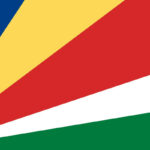Tornadoes, nature’s most violent storms, are capable of immense destruction. Understanding where these powerful weather phenomena are most likely to occur is crucial for safety and preparedness. While no place is entirely immune, certain regions experience a significantly higher frequency of tornadoes due to specific geographical and atmospheric conditions. This article delves into the primary areas where tornadoes happen, focusing on the infamous “Tornado Alley” and other global hotspots.
Tornado Alley: The Heart of Tornado Activity in the US
The United States is by far the country most affected by tornadoes, and within the US, a region known as “Tornado Alley” is the epicenter of this activity. Tornado Alley is not an officially defined area but generally refers to the plains states in the central United States. This area includes states like Texas, Oklahoma, Kansas, Nebraska, South Dakota, Iowa, Missouri, and parts of eastern Colorado and New Mexico.
What makes Tornado Alley so prone to tornadoes? The unique geography of this region creates the perfect breeding ground for severe thunderstorms and tornadoes. Warm, moist air from the Gulf of Mexico at low levels clashes with cold, dry air from Canada and the jet stream aloft. This collision of air masses, combined with the flat, open terrain that allows storms to organize and intensify, leads to the formation of supercell thunderstorms – the type of storm most likely to produce tornadoes.
Beyond Tornado Alley: Expanding the Tornado Prone Zones
While Tornado Alley grabs headlines, tornado activity extends beyond these core states. Areas adjacent to Tornado Alley, as well as other regions in the US, also experience a significant number of tornadoes. “Dixie Alley,” located in the southeastern United States, including states like Alabama, Mississippi, Tennessee, and Arkansas, is another region with a high tornado frequency, particularly during the late fall and early spring.
Furthermore, it’s important to recognize that tornadoes can occur in almost every US state, although with varying frequency. States along the Front Range of the Rockies, the Midwest, and even parts of the Northeast and West Coast have experienced tornadoes.
Global Tornado Hotspots: Tornadoes Worldwide
The US experiences the most tornadoes, but they are not exclusive to North America. Tornadoes, or tornado-like storms, occur in various parts of the world, often in regions with similar geographical and meteorological conditions to the US Great Plains.
Significant tornado activity has been reported in:
- Argentina, Uruguay, and parts of Brazil: This region in South America, sometimes referred to as the “South American Tornado Alley,” experiences similar atmospheric setups to the US Great Plains.
- Bangladesh and parts of India: These areas in South Asia are vulnerable due to their geography and monsoon climate.
- Australia: Tornadoes occur in various parts of Australia, although they may be underreported.
- Europe: While less frequent and generally weaker than US tornadoes, Europe does experience tornadoes, particularly in coastal and western European countries.
Understanding Tornado Formation: Key Atmospheric Ingredients
Regardless of location, tornado formation requires a combination of specific atmospheric ingredients:
- Moisture: Warm, moist air at lower levels provides the necessary humidity for thunderstorm development.
- Instability: A layer of warm, moist air near the ground capped by cooler, drier air aloft creates atmospheric instability, allowing air to rise rapidly.
- Lift: A lifting mechanism, such as a front, dryline, or upper-level disturbance, is needed to initiate thunderstorm development.
- Wind Shear: Changes in wind speed and direction with height are crucial for the development of rotating thunderstorms (supercells) and tornadoes.
These conditions are most frequently met in regions like Tornado Alley, which explains the higher tornado incidence there. The cloud features described in the original article – inflow bands, beaver’s tail, wall clouds, rear flank downdrafts, and condensation funnels – are all visual indicators that these atmospheric ingredients are coming together to potentially produce a tornado within a supercell thunderstorm.
Conclusion: Staying Informed and Prepared
While “Where Do Tornadoes Happen” often leads us to think of Tornado Alley, it’s crucial to remember that tornadoes are a global phenomenon. Understanding the regions prone to tornadoes and the atmospheric conditions that favor their formation is the first step in preparedness. Staying informed about weather forecasts, recognizing warning signs, and having a safety plan are essential for anyone living in or traveling to tornado-prone areas worldwide.

